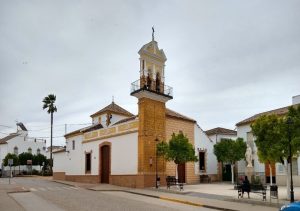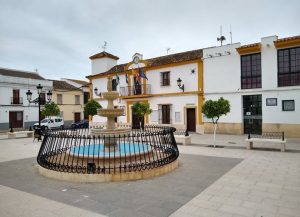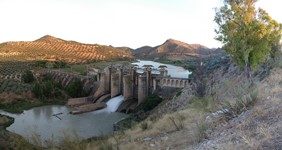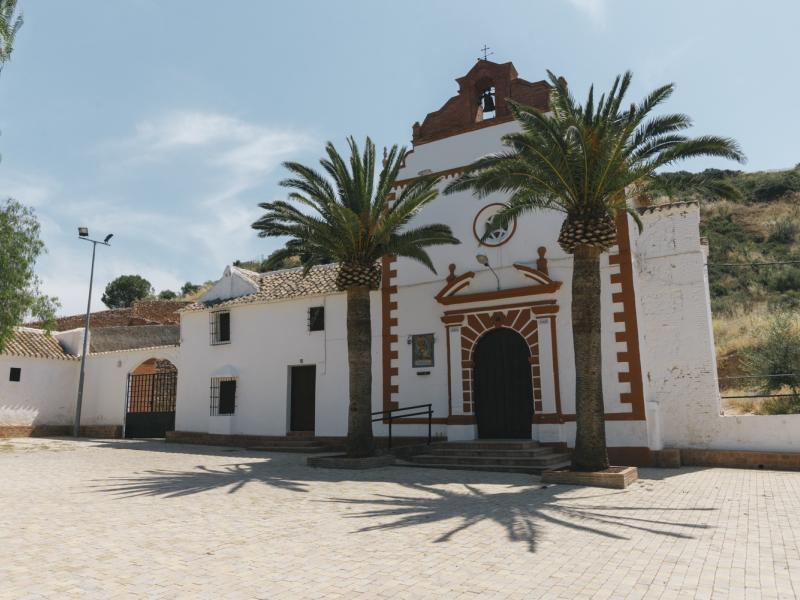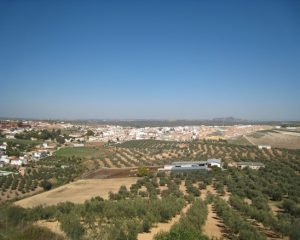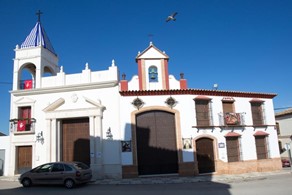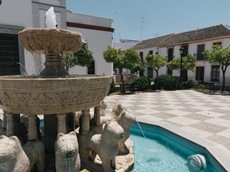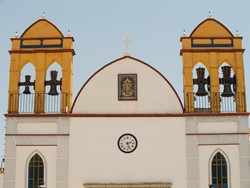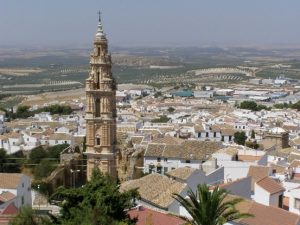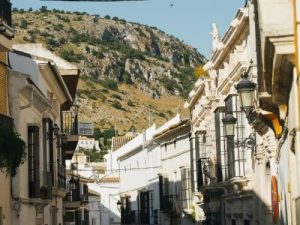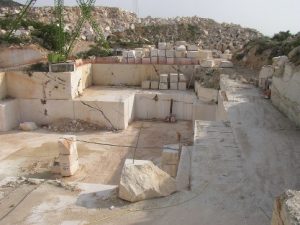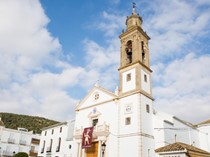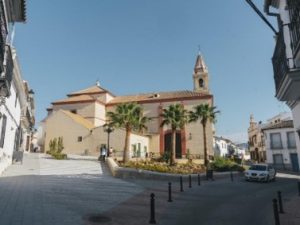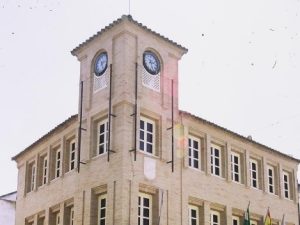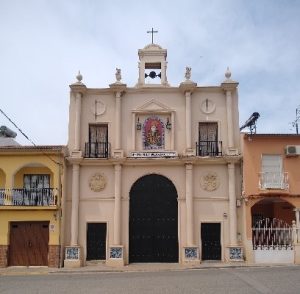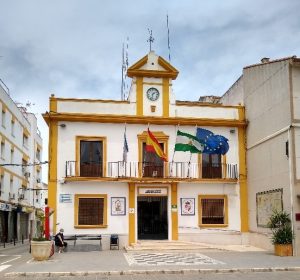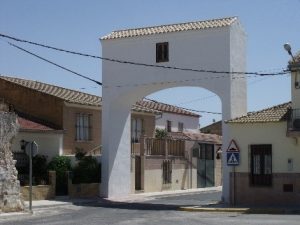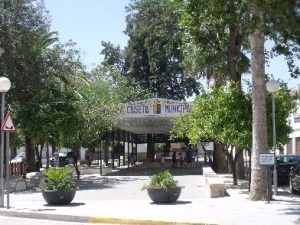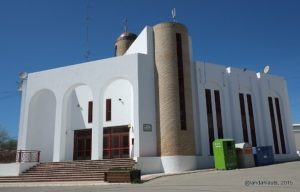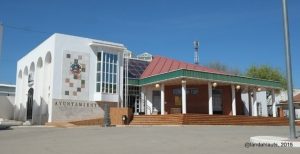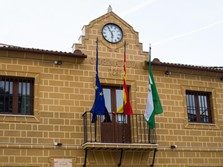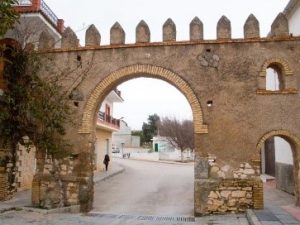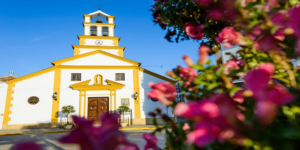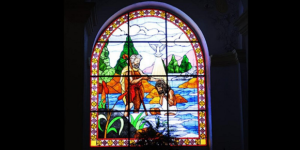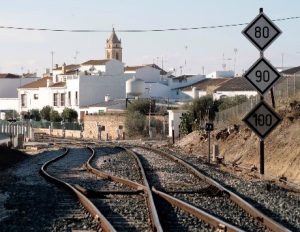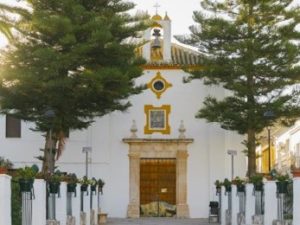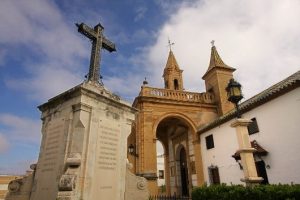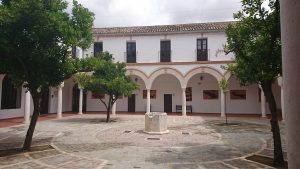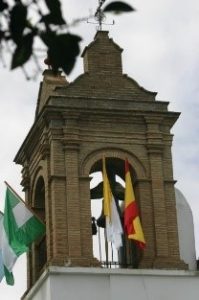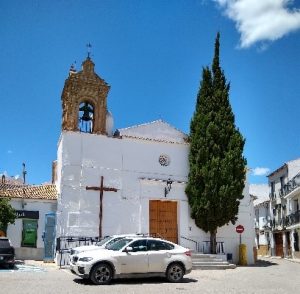Welcome to the heart of Andalusia.
You’ll be able to experience an important range of patrimonial legacy and heritage that includes important archaeological sites, mosaics and baths that have been preserved from the region’s Roman past. The vast majority of the region’s churches and palaces feature the baroque style. But the absolute highlight, without any shadow of a doubt, is the nature, which is why we recommend you take one of the numerous routes through the region’s natural environment. Venture up to one of the region’s viewpoints, where you’ll be able to enjoy incredible views. You’ll also be able to relax as you walk along its natural trails.
Part of this territory features the Protected Designation of Origin Estepa, which protects an ancient form of olive grove farming, unique and recognised for its certified high quality with the most demanding technical requirements found in the industry.
Here in the heart of Andalusia, more than seven thousand olive-growing families form a cooperative based on its commitment to excellence and sustainability, which allows them to produce a truly extraordinary extra virgin olive oil.
In the following guide, we are going to show you information of interest for each village or town found in the Oleoestepa region, the area where you’ll find the 19 affiliated oil mills. We hope this guide awakens your curiosity and inspires you to pay us a visit.
We are waiting for you to visit!
AGUADULCE
History
The town was populated by the Romans (Ancient Ipora) and Arabs. After the reconquest occurred, the Camino Real de Granada was sold and first controlled by the Order of Santiago and later by the Marquisate of Estepa, until it gained independence in the 18th century.
It owes its name to its exceptionally high-quality water. Legend has it that Miguel de Cervantes spent the night in these lands on his journey from Seville to Granada. In the 19th century, after the construction of the railroad, it would enjoy a significant population growth. Nowadays, it is a mainly agricultural and livestock farming town, featuring a predominance of olive groves, rain-fed agriculture and vegetable gardens where its famous broad beans grow.
What to do
As well as its long and straight streets, lined with attractively kept houses, where the Casa de Pepe Hara, found in front of the church, renowned for its continuous balcony and chamfer, and the Casa de Durán on Calle Manuel de Falla stand out as landmarks, Aguadulce also features other interesting landmarks that are perfect for visitors.
- Iglesia de San Bartolomé, dating back to the 18th century, which houses a valuable oil painting from the 17th century and several pieces of gold work from the 18th century.
- The Huerta Las Almenas, Puente de Hierro and Puente de Piedra.
- After this route taking in the town’s landmarks, you’ll be able to enjoy the pleasant natural environment offered by the town, which features locations like Matorral de Rompesquina, the Río Blanco or the Arroyo Grande o de la Ribera.
Celebrations
- Semana Santa (Holy Week) is celebrated with the processions of the Brotherhood of Nuestro Padre Jesús Nazareno and the Virgen de los Dolores.
- On May 1st, Romería de San José Obrero takes place.
- La Feria (Town fair) and fiesta patronal de San Bartolomé, with a procession of the patron saint, is celebrated from August 21st to 24th
- December 8th is the day of the patron saint, the Immaculate Conception.
Tourist map
https://www.turismosevilla.org/sites/default/files/2020-05/Plano%20Aguadulce.pdf
More information
https://www.turismosevilla.org/es/la-provincia-de-sevilla/nuestros-pueblos/aguadulce
http://www.aguadulce.es/es/municipio/situacion/
BADALATOSA
History
Both the founding of this town and its name would appear to be owed to the Romans. After the battle of Munda that Julius Caesar fought against Pompey and his sons, in the year 45 BC, it is thought that the Roman emperor crossed the Sergelio (Genil) river where it passes through Vadus Latus (Wide Ford), which constitutes the area where the town now sits. It appears that it was during this time that the town was named Vadus Latus and the town was founded in the form of a group of dwellings called Vado de las Chozas.
On the other hand, if we consider much more recent history, it seems that the current name of Badolatosa might come from the term Badolatosa (wet back), originating from the time of Arab domination on the Iberian Peninsula. During this period, the town was home to a large vegetable field, whose products were used to supply the neighbouring towns.
During the 17th-19th centuries, the area was associated with banditry and is perhaps best known for the famous Tempranillo bandit.
What to do
- Learn about the history of the most famous bandit in Spain on the Ruta del Tempranillo, where you’ll have the chance to visit the caves where this figure and his gang lived.
- Take in beautiful views of the Río Genil and its surroundings from the Mirador del Meandro.
- Enjoy a fossil exhibition from the area and a taxidermy room at the Centro de Interpretación del Río Genil (River Genil theme centre)
- Enjoy the Embalse del Malpasillo (Malpasillo reservoir), an area that has been designated for fishing, where riverside vegetation abounds (reeds, rushes, etc.) and also acts as a special protection area for birds in its role as a wintering location for large flocks of waterfowl.
- Taste local dishes like migas, the flamenco-style endives, Romani gypsy-style artichokes and gazpachuelo in the most authentic Badolatoseño style.
- Visit the Iglesia de Nuestra Señora del Socorro. A Simple building, where the doorway and the bell tower from the 17th century stand out as attractive sights. Inside the church, you’ll find three naves, presided over by Our Lady of Socorro, originally from the Iglesia de la Victoria de Estepa. It acts as the seat of the patron Saint Placido and the images of the Nazarene, the Christ of Agony, the Resurrect and the Virgin of Sorrows, which form part of the town’s procession during Holy Week.
- In the town itself, you’ll find the manor house known as Casa Grande, located in the centre and Avenida de Cuba, as street featuring a neo-colonial regionalist style.
- Enjoy a leisurely stroll to the Ermita de Nuestra Señora de la Fuensanta located 1 km north of Corcoya, at the foot of Cerro La Cabrera. Built in the 17th century, you’ll find the local stream and the Gruta del Portón grotto, one of the places the infamous Tempranillo bandit visited. Pilgrimage to the hermitage is celebrated on September 8th.
- Visit the Arab waterwheel of Badolatosa, located in the Huertas del Duque on the other side of the river. Local farmers used it up until as late as the 1990s.
Celebrations
- Fiesta de San Blas, on February 3. Loaves of bread are blessed as gifts, adorned with rosemary, bows and ribbons.
- Taba Route and Mercado Bandolero in March.
- Semana Santa (Holy Week). Borriquito (Little Donkey) presentation on Palm Sunday. On Holy Tuesday, the Via Crucis is celebrated at midnight. From Holy Thursday to Easter Sunday, the Virgin of Sorrows and the Holy Burial, Christ of the Agony and the Resurrection.
- Día de San Marcos on April 25.
- Ruta de la Tapa Bandolera is celebrated in June.
- Feria de Badolatosa, for the Virgen del Socorro from August 4th to 8th.
- Romería de la Virgen de la Fuensanta, September 8 coincides with the Corcoya Village Fair.
- Procession of San Placido in October, for the town’s patron saint.
Tourist map
https://www.turismosevilla.org/sites/default/files/2021-05/Plano%20Turistico%20de%20Badolatosa.pdf
More information
https://www.visitarsevilla.com/provincia/sierra-sur/badolatosa/
https://www.turismosevilla.org/es/la-provincia-de-sevilla/nuestros-pueblos/badolatosa
CASARICHE
History
Casariche is located at an altitude of 296 metres, on a plain divided by the río Yeguas, a a tributary of the river Genil.
The historical origins of Casariche date back to the times of the Celtiberians. The town soon became part of Rome’s southern territories and experienced one of the most important episodes of the entire period. During the Arab period, it became more renowned because it was located in the border area between the Arab and Christian kingdoms and formed part of the Waliato de Estepa. After negotiations held between the Almohads and King Alfonso X The Wise in 1267, it was handed over to the Order of Santiago. As a result of this change of power, Santiago Apóstol is town’s patron saint to this day.
From the beginning of the 19th century, the town was a site of significant importance in bandit tradition and became well-known throughout the nation for being a hub of raids and espionage for bandits and thieves who lived in the area.
What to do
- Visit the José Herrera Rodas Mosaic Museum Collection, where the Roman mosaic of the Judgment of Paris is located and learn more about the technique used in this work of art.
- Take the tour of the Ruta del Tempranillo (Tempranillo route) and learn more about the famous bandit’s exploits.
- Walk along the banks of the Río Yeguas, ideal for enjoying nature.
- Experience the Romanorum Festum Ventippo, a festival where you will feel like an authentic Ancient Roman.
- Visit the Iglesia de Nuestra Señora de la Encarnación, dating from the 17th century. The main baroque altarpiece features the image of the patron saint of the town, Ntra Sra. de la Encarnación.
- Visit the Centro temático del mosaico romano (Roman mosaic theme centre) where you’ll find a collection of mosaics taken from the site of the Villa Romana del Alcaparral Roman villa, among which the Judgment of Paris is a true highlight, as the only piece of its kind on the Iberian Peninsula.
- Visit an important archaeological site on La Atalaya hill: the remains of Ventippo, an ancient city founded by the Celts several centuries before Christ. And to the south of the town in the Cortijo de Parejo, the site of the Roman city of Caruca, where mosaics have been found.
Celebrations
- Candlemas Festival, on February 2nd. More than half a thousand bonfires are lit at nightfall.
- The Romería de San Marcos, a pilgrimage celebrated on April 25th, in partnership with the town of Lora de Estepa.
- Velá de San Antonio, in June.
- Feria de Santiago, held on July 25th, as a fair in honor to the town’s patron saint.
- Romanorum Festum Ventippo, held at the end of August.
Tourist map
https://www.turismosevilla.org/sites/default/files/2020-05/Plano%20Casariche.pdf
More information
https://www.visitarsevilla.com/provincia/sierra-sur/casariche/
https://www.turismosevilla.org/es/la-provincia-de-sevilla/nuestros-pueblos/casariche
EL RUBIO
History
Its origin is thought to date back to Roman times, from a farm called Fundus Rubeus which was then given its current name El Rubio during the Visigothic period. It was once a strategic point that joined together two important Roman cities: Astigi and Ostippo. The river Blanco runs through it and the river served as a means to regulate trade between what are now the towns of Écija and Estepa. For this reason, it has often been known as the crossroads between the Campiña and the Sierra Sur.
It was a traditional Cortijada farmhouse belonging to the Duchy of Osuna, until the nineteenth century when it was finally granted status as an independent municipality.
What to do
- Enjoy the Campiña Flamenco Festival in July, which has been celebrated for more than 30 years.
- Take a route through the Laguna de la Escalera and you’ll have the chance to spot unique species.
- Taste the ochíos, the traditional magdalenas sweet breads and almond sweets which are renowned as the town’s traditional dishes.
- Enjoy birdwatching at the Laguna de la Escalera.
Celebrations
- Las Candelarias (Candlemass), during the night of February 2nd.
- Romería de la Virgen del Rosario, a pilgrimage to the hermitage located on the Cerro de la Cabeza, celebrated on the first Sunday of May.
- Campíña Flamenco Fair and Festival in August.
- Rock Music Festival, Gallape Rock from August to September.
- Feast of the Virgen del Rosario, dedicated to the Virgin in October.
Tourist map
https://turismosevilla.org/sites/default/files/2020-02/Plano%20turistico%20El%20Rubio.pdf
More information
https://www.turismosevilla.org/es/la-provincia-de-sevilla/nuestros-pueblos/el-rubio
https://www.visitarsevilla.com/provincia/campina/el-rubio/
ESTEPA
History
The oldest settlements found here date back to the Neolithic period. The Carthaginians named it Astapa and it was then destroyed in 206 BC by the Romans during the Punic Wars. They later rebuilt it themselves and named it Ostippo. During the Al-Andalus period it was called Istabba, constituting an important hub at the time.
The Christian conquest was carried out by Fernando III in 1240. It then became the seat of the masters of the Order of Santiago from the year 1267, until in 1559, the first Marquises of Estepa bought it. It was granted official town status in 1886 by Queen María Cristina.
What to do
- Enjoy a stroll through the monumental complex of Cerro de San Cristóbal. On its east side you’ll find the Balcón de Andalucía. Once there, visit the Old Arab Alcazaba, located in the highest altitude area, which later housed the palace of the Marquises of Estepa. It features a defensive Keep, which measures 26 metres high by 13 metres wide. On clear and cloudless days you can see as far as the Sierra Nevada from its deck; the Iglesia de Santa María la Mayor de la Asunción, built by the order of Santiago between the 15th and 16th centuries, on a more primitive Gothic church built on top of a Islamic building; the Museum of Sacred Art, where the relic of the skull of Santa Inés is among the attractions; the Torre Ochavada, a tower of Almohad origin used as a pantheon until 1968, where the current Tourist office and the Centro de Interpretación Tartésico are located; the cloistered Convento de Santa Clara founded in 1599 by the Marquises of Estepa; and the Convento de San Francisco which houses the Nuestra Srª De Gracia church from the 17th century.
- Stroll through the old town to visit the Nuestra Señora del Carmen church, in the baroque style of the 18th century; the Plaza del Carmen, known locally by its colloquial name “El Salón” where the Town Hall and the tourist office are located; the Plaza de la Victoria, with its slender baroque tower, a town landmark; the parish church of San Sebastián, built between the 16th and 17th centuries; the Archaeological and Historical Museum; the church of Nuestra Señora de la Asunción, the Casa Palacio Marqués de Cerverales, in the baroque style of the 18th century; the Esquina del Marqués de Oro, a 17th century mansion, with its renowned balcony; the Church of Nuestra Señora de los Remedios, the former hermitage of Vera Cruz, built in the 18th century; the Ermita de Santa Ana hermitage, and the Ermita de San Marcos hermitage.
- Tour the 24 mantecados factories in Estepa and learn how to make the town’s best loved product.
- Spend Easter in Estepeña, where the celebrations have been recognised as a Festival of National Tourist Interest.
- Enjoy toast with Estepa Designation of Origin extra virgin olive oil for breakfast.
- In July, visit the Coracha neighborhood to celebrate the Velá de Santa Ana.
- Savour traditional sweets including bienmesabe or ochíos made by nuns at the Convento de Santa Clara.
- Go hiking through the natural area of Manantial de Roya and visit the Ermita de San José Obrero hermitage.
Celebrations
- Semana Santa (Holy Week) There are nine Brotherhoods of Passion, and all of them process through the streets of the town, from Palm Sunday through to Easter Saturday.
- In May, the Romería de San José Obrero pilgrimage is made to his hermitage in Manantial de la Roya and the Octava de la Virgen de los Remedios, with festivities and a procession and ascent of the Virgin.
- The Velá de Santa Ana, next to her hermitage, located in Plaza Poley to east of the town.This event takes place in July.
- La Asunción, on August 15th, the date on which legend celebrates the conquest of the city by Fernando III.
- Feria de Estepa, celebrated during the first days of September.
Tourist map
https://www.turismosevilla.org/sites/default/files/2020-02/Plano%20turistico%20Estepa_0.pdf
More information
https://www.visitarsevilla.com/provincia/sierra-sur/estepa/
http://www.estepa.es/es/turismo/
GILENA
History
Like neighboring municipalities, it formed part of the Antigua Encomienda de Estepa, which once belonged to the Order of Santiago.
Due to its geographical location and the abundance of water, all kinds of civilizations have passed through the area, and each of them left numerous archaeological remains, ranging from the Chalcolithic, the end of the Bronze Age, Iberian, Roman, Visigothic and Arab. The first settlements were built next to the clear water spring that flowed from the Sierras through the “Ojo de Gilena” (Eye of Gilena), as well as along its stream.
It was the municipal head of a “Cora” district in those times and had the honor of featuring in the work of the 12th and 13th century geographer Yaqut Al-Hamawi, “The Book of Nations”, where the wonderful products harvested along its riverbanks were praised, with special mention of its apples, famous throughout Al-Andalus. Hydraulic energy was used from the waters of the Ojo de Gilena to keep the flour mills built by the Arabs along the riverbanks turning.
What to do
- Visit the Church of the Immaculate Conception, from 1620, with a neoclassical façade and a slender bell tower; the Hermitage of Our Lady of Health, from 1891, patron saint of the town.
- Walk to the Eye Spring. Near the hermitage, a recreational area, was used to move the flour mills built by the Arabs along the riverbank.
- Visit the Museum of Contemporary Painting Francisco Maireles Vela, a painter of local origin, considered the best in Sevillian religious painting of the 20th century.
- Visit the Museum Collection of Art and History.
- Go up to the Sierra de Gilena and contemplate the wonderful views from the Acebuchosa viewpoint.
- Taste typical Gilena dishes, such as garlic rabbit and fava bean casserole, made with local produce.
- Visit Gilena at Easter to learn about the famous Roman century that accompany the processions.
- Try the shortbread from Gilena, a different variety from those from Estepa, crunchy on the bottom and tender on top.
- Attend the popular Fiesta de los Tontos, on December 28, with a festival and a costume contest.
Celebrations
- Candlemas Festival, which is celebrated on the night of February 2nd.
- In May the Romería campestre en honor de San Isidro Labrador and Nuestra Señora de Fátima countryside pilgrimage.
- In August, the image of the Virgen de la Salud is taken out for procession and the Town fair is celebrated.
- Castra Legionis Roman Festival in September, to commemorate the important battle of Munda, which ushered in the end of the Roman Republic and the birth of the Empire.
- On October 7, the Festividad de Nuestra Señora del Rosario, with a procession and fireworks including the famous fire bull.
Tourist map
https://www.turismosevilla.org/sites/default/files/2020-06/Plano%20Turistico%20Gilena.pdf
More information
https://www.turismosevilla.org/es/la-provincia-de-sevilla/nuestros-pueblos/gilena
https://www.visitarsevilla.com/provincia/sierra-sur/gilena/
HERRERA
History
Herrera emerged as a farmhouse between 1511 and 1514, with the Las Carrizosas farmhouse serving as an example. Here, you’ll be able to see how some buildings are still attached, forming a type of street.
For many years, the Dehesa del Cortijo de Herrera remained dedicated exclusively to livestock farming. In documents found dated up to the year 1610, Herrera is always referred to as the Cortijo or Partido de Herrera. Herrera was founded as a town in 1631 as a result of the Estepa Council’s intention to obtain money to cover financial aid requested by King Felipe IV to fund his wars. All this led to a repopulation of Herrera with residents from Estepa and some families from the Kingdom of Portugal, the Kingdom of León and Galicia, which are the ones that give rise to the founding of the Calle de los Labradores.
What to do
- Visit the Parroquia de Santiago el Mayor located in the upper part of the old town; the Fuente Vieja fountain in the Plaza de Andalucía, the original water supply for the town; the Chimenea de Prograsa on calle Casariche, built in 1961, 27 metres high, which was part of an oil mill and symbolises the town’s industrialisation.
- Visit the Municipal Museum, with an important collection of Ancient Medicine, Natural Sciences and Archaeology.
- Discover the farmhouses of Las Carrizosas, where the Hermitage of Our Lady of the Rosary of Fátima is located.
- Travel two thousand years back in time by taking in the Conjunto Termal de Herrera roman baths complex which dates back to the 3rd century AD. This site is one of the best known Roman recreational villas.
- Climb the hill where the Arab fortress of Alhonoz is located, which still preserves its defensive walls.
Celebrations
- Experience Holy Week in Herrera and get to know the ‘rostrillos’, a tradition in which the neighbours represent passages from the Passion of Christ while accompanying the steps.
- San Marcos: April 25th, when the town’s residents enjoy a day in the countryside
- Pilgrimage in honour of Nuestra Señora del Rosario de Fátima (May), in the hermitage located in Las Carrizosas.
- San Juan Verbena
- Herrera Fair. the second week of august
- Virgen del Rosario in October with a procession.
- Marín Arjona National Theatre Festival.
Tourist map
https://www.turismosevilla.org/sites/default/files/2020-06/Plano%20Turistico%20de%20Herrera.pdf
More information
https://www.visitarsevilla.com/provincia/sierra-sur/herrera/
https://www.turismosevilla.org/es/la-provincia-de-sevilla/nuestros-pueblos/herrera
LA RODA DE ANDALUCÍA
History
During a period of time where legend and reality were frequently confused, some historians claim that the town’s origin can be associated to the Celtiberian name of URAGAO, which was then cited as CARRUCA during roman times, where battering rams and utensils have been found from the civil war fought generals Julius Caesar and Pompey (Battle of Munda, 1st century BC).
The Muslims called it ROBDA, turning its territory into the border between the Christian kingdoms of Seville and the Muslim kingdom of Granada. Up until the 13th century, La Roda earnt the name “no man’s land”, since the smooth and open geography of its fields were the perfect place for easy incursions and battles.
In 1251 it was conquered by Fernando III “El Santo”, but it became Arab territory again in 1262, before turning Christian again in 1263 under Alfonso X “The Wise”. Shortly after, La Roda became part of the Order of Santiago, establishing itself on the border strip of the Yeguas River, where the entrance gate or traditional customs office between the two kingdoms sat, hence its name AL-ROA. In 1546 the first groups of settlers started becoming dependent on the Marquesado de Estepa, which would last until 1812. In the mid-nineteenth century, the company Ferrocarriles Andaluces decided to trace the railway line from Córdoba to Málaga, creating an important railway junction in La Roda that would later connect with Seville and Algeciras. The national motorway N334 that runs through its centre would also act as a significant tool in strengthening it a transport hub.
In 1916 , “DE ANDALUCIA” was added to La Roda’s name, due to the numerous towns called Roda that exist across Spain.
What to do
- Visit the Railway Museum to learn how this means of transport transformed the town in the 19th century.
- Enjoy a hiking route through the area of the Salinoso stream, where you’ll find the Roman bridge.
- Take a guided tour of the stunning Hacienda del Polvorín.
- Taste the asparagus majaillo and the olla andaluza stew with mint, which are among the town’s best-known dishes.
- Visit the Iglesia parroquial de Santa Ana church, built in the baroque style of the 17th century; the Virgen de los Llanos hermitage and the San Pancracio hermitage, located in the Sierra de Lucas, which is sometimes known as the Sierra de los Caballos.
- Take in numerous species of birds in Laguna del Tejar, a protected wetland area, surrounded by vegetation.
Celebrations
- The most important is Holy Week. It has been declared a Festival of National Tourist Interest in Andalusia and is one of the best-known in the region.
- La Candelaria celebration, which is marked with bonfires.
- Verbena and Pilgrimage in honour of San Pancracio y las Cruces (May).
- The Patron Saint Festivities in honour of the Virgin of Los Llanos (September 8).
- Feria de San Pedro town fair (June).
- Acordes de Rock Music Festival (July).
Tourist map
More information
http://www.larodadeandalucia.es/es/municipio/historia/
https://www.turismosevilla.org/es/la-provincia-de-sevilla/nuestros-pueblos/la-roda-de-andalucia
LORA DE ESTEPA
History
A small dwelling called Lauro or Lauris originated in the area during Roman times and is thought to have been an area destined to recreation and perhaps closely linked to the neighboring towns of Ostipo and Ventipo. In the Arab era it was called Al-auriat and in 768 was engaged in battle against the Africans who tried to attack Ixbilia (Seville). In 1250, it became part of the Marquisate of Estepa after its reconquest took place,
The current settlement that we see today doesn’t date back beyond the end of the 16th century or the beginning of the 17th century when Don Juan de Córdoba Centurión set up residence there. The name Lora de Estepa was adopted to differentiate it from Lora del Río and other towns with the same name, which is why its name was changed.
What to do
If you are looking to disconnect and recharge your batteries, you will love Lora de Estepa. Its mountainous environment, the authentic calm of its streets and the friendly vibes of its people are what make this small town an unmissable destination.
- Start your visit in the Plaza de España, which local people call El Monumento, since it houses the statue of the Sacred Heart of Jesus statue. On its north side you will see the remains of the Palacio de Juan de Córdoba Centurión,the Marquis of Estepa’s son’s palace.
- Visit the Iglesia de San Miguel church to enjoy its neoclassical in style.
- Visit the San José de Lora de Estepa oil cooperative.
Celebrations
- Romería de San Marcos pilgrimage, held on April 25th.
- The Feria de San Miguel fair, held at the end of September. The celebration marks the end of summer and includes a procession of local patron saints.
Tourist map
More information
https://www.turismosevilla.org/es/la-provincia-de-sevilla/nuestros-pueblos/lora-de-estepa
https://www.visitarsevilla.com/provincia/sierra-sur/lora-de-estepa/
MARINALEDA
History
The first signs of any form of dwelling in the region dates back to the Neolithic ageand close to the Metal Ages, since remains of dwellings of a town from about 5,000 years ago have been found. Remains of a Roman road that linked Estepa have also been found. The Arab presence in the area can be seen through examples such as the ruins found at Las Torres de Gallape or the Arab fortress of Alhonoz.
The site became an established town in the middle of the 18th century, where it was first populated by day labourers. During the 19th century, it had strong connections to bandits and figures like José María El Tempranillo, El Pernales, and Juan Caballero, Marinaleños were once Marinaleda residents.
What to do
- Visit the Iglesia de Ntra. Sra. de la Esperanza church and the Iglesia de la Virgen de la Paz church, with the latter found in the district of Matarredonda. These churches are Marinaleda’s most outstanding heritage sights.
- Celebrate Peace Day on January 30th. The event honours Mahatma Gandhi by marking his assassination with a burning of toy guns and war-related toys and different cultural events.
- Enjoy the renowned jars of artisan pickled vegetables produced in town. This product is made thanks to the union of all the municipality’s cooperatives.
Celebrations
- Candelaria with the traditional burning of dolls ritual.
- Holy Week. The town is home to five brotherhoods.
- San Marcos, celebrated on April 25th.
- Pilgrimage of Nª Srª de los Caminos.
- Feria de Santiago, held in July.
- San Nicolás de Tolentino, a saint’s procession held on September 10th.
- Festival of Flamenco.
- New Year’s Eve, marked by a popular verbena fair.
- Carnival.
- Peace Day, celebrated on January 30th.
Tourist map
https://www.turismosevilla.org/sites/default/files/2020-06/Plano%20Marinaleda.pdf
More information
https://www.turismosevilla.org/es/la-provincia-de-sevilla/nuestros-pueblos/marinaleda
https://www.visitarsevilla.com/provincia/campina/marinaleda/
MARTÍN DE LA JARA
History
This territory, while originally Muslim, was conquered by the Castilian King Ferdinand III (1240), becoming part of a border area subject to constant ups and downs, which did not provide favourable conditions for the settling of populations in the area. For this reason, the area was left to the control of a Military Order. This situation remained the same until the taking of Antequera (1410) and Ronda (1480). From then on, the border strip was handed over to the nobles in payment for their services, leaving Martín de la Jara under the Osuna’s control.
At the beginning of the 19th century, with the abolition of jurisdictional manors, the first Constitutional Town Hall was founded in Martín de la Jara.
What to do
- Visit the Iglesia parroquial de Nuestra Señora del Rosario church. A century old, it features a humble tower on one of its sides and a belfry on the opposite side. The main altarpiece is presided over by the Holy Christ crucified from the 16th century of the Sevillian school and the Our Lady of the Rosary patron saint.
- Visit the Laguna del Gosque Nature Reserve, 2 km away, which can be reached by taking the Carretera de Pedrera main road. Surrounded by olive groves, it is one of the largest endorheic saline lagoons in the province of Seville, with 441 hectares and is a site of enormous ecological value due to its uniqueness in Europe.
- Taste the local gastronomy, which features an abundance of sausages, cheeses and dishes based on products from local vegetable gardens. Make sure you try the local almorraque and porra jareña before you leave.
- Savour traditional buñuelo sweet doughnuts with a delicious cup of chocolate. We guarantee you that they are the best treat for cold days.
- Experience the pilgrimage of the Virgen del Carmen to the Laguna del Gosque in July.
- Come at the end of July, you will enjoy the Martín de la Jara Fair. In addition, on those days the Cante Jondo Festival is celebrated, a flamenco meeting with more than 35 years of history.
Celebrations
- Los Candelorios, a traditional celebration in San Blas.
- The Pilgrimage to the Laguna del Gosque, which takes place on a different yearly date during March or during the Virgen del Carmen celebration on July 16th.
- Semana Santa (Holy Week)
- The Town Fair is celebrated on the last weekend of July of each year, with the Cante Jondo Festival, which is known to be one of the oldest festivals in the province of Seville
- The celebration of the Patron Saint of Nª Sra. Del Rosario, including a procession.
Tourist map
More information
https://www.turismosevilla.org/es/la-provincia-de-sevilla/nuestros-pueblos/martin-de-la-jara
https://www.visitarsevilla.com/provincia/sierra-sur/martin-de-la-jara/
MOLLINA
History
The ceramic remains and cave paintings found in some caves of the Sierra de la Camorra confirm the presence of humankind in this area since the Neolithic period. However, there are no traces of the arrival of other civilizations until the Romans. Heritage from the period includes the fascinating archaeological sites that the town treasures, which include the renowned sites of Castellum de Santillán and the Mausoleo de la Capuchina.
The origins of the current urban complex of Mollina date back to the 16th century, with the distribution of the lands of the city’s Cortijo carried out by the Council of Antequera. From then on, the town developed economically and demographically at an extraordinary rate, quickly becoming an area with the largest number of olive trees in the entire region. This area became known as Pago de las Olivas for a time as a result of this natural abundance.
During the first part of the 19th century, the town became independent from Antequera. Over the course of the second half of the 20th century, Mollina suffered the consequences brought about by emigration from the town. From the little more than 5,000 inhabitants registered in 1956, this figure dropped to 2,800 barely two decades later. Today the olive groves play an important role alongside vineyards, producing a good part of the wines featuring the Designation of Origin Malaga.
What to do
- Visit the area’s important Roman remains, including the Castellum de Santillán, and the Mausoleo de la Capuchina, a funerary monument that includes a crypt and an upper floor which was used to worship the dead.
- Visit the Nuestra Señora de la Oliva church, founded in the 17th century, and the Convento de la Ascensión, also known as the Cortijo de la Villa.
- Taste its traditional gachas de mosto sweets, made during the grape harvest season.
Celebrations
- Candlemas. Celebrated on February 1st, the feast of the Virgen de la Candelaria.
- August fair. Celebrated in honour of its patron saint, the Virgen de la Oliva around August 15, which marks the day of the Virgen de la Oliva. (Virgin of Olives)
- Wine harvest festival held the second weekend of September, in the surroundings of the Plaza de Atenas, an ideal place to taste our wines. Every year this festival provides an exciting event during which the town’s economic and cultural figures gather.
- Pilgrimage is celebrated the second weekend of May in honor of the Virgen de la Oliva in the Paraje natural de Santillán, a natural park area.
More information
https://www.visitacostadelsol.com/destinos/pueblos-blancos-de-interior/mollina-p9881#pestHistoria
PEDRERA
History
Although the town’s origins date back to Roman times, it owes its name to the quarries that surround it, which were used in the Middle Ages to manufacture projectiles for artillery cannons.
What to do
- Explore its interesting heritage, including the San Juan Evangelista Brotherhood House’s façade, made by local master craftsmen with stones from the area’s quarries. You can also take in the Iglesia Parroquial de San Sebastián church, built in the 16th century, featuring a slender tower, which is home to the patron saints San Sebastián and the Virgen de la Oliva; the Ermita del Santo Cristo de la Sangre hermitage, on the street of the same name and the Ermita Nuestra Señora del Carmen hermitage, dating back to the 18th century.
- Visit the Museo Municipal, where the archaeological remains and the history of the town are on show for visitors, and you’ll even be able to take in an exhibition hall.
- Enjoy a walk on the Sierra de la Cruz and the Arroyo del Búho, whose waters are recommended for healing skin conditions and wounds as well as purifying the body.
Celebrations
- Carnival, which culminates in the traditional Burial of the Sardine, on Ash Wednesday.
- Semana Santa (Holy Week), with four penitential brotherhoods that go out in procession on Holy Friday and Holy Saturday.
- The feasts of San Antonio and the Virgen de la Oliva in June.
- The celebration of the day of the Virgen del Carmen on July 16th, which includes a procession of the virgin carried by town’s women.
- The Town fair is celebrated during the second fortnight of August.
Tourist map
https://www.turismosevilla.org/sites/default/files/2020-06/Plano%20Turistico%20Pedrera.pdf
More information
https://www.turismosevilla.org/es/la-provincia-de-sevilla/nuestros-pueblos/pedrera
https://www.visitarsevilla.com/provincia/sierra-sur/pedrera/
PUENTE GENIL
History
This town was renamed as Puente Genil when in 1834 the Queen Regent María Cristina united the two parts of the existing settlements on both sides of the river. The first settlers began to arrive in the area after the construction of a mound that crossed the Río Genil. Later, in 1561, a viaduct was built to replace the pontoon bridge. At this time, the town’s flow of trade experienced a noticeable increase. It’s interesting to note that the right side of the river belonged to Córdoba while the left side belonged to Seville until the 20th century.
What to do
- The Río Genil Bridge. Its first building dates back to 1561, constructed by Hernán Ruiz II to replace the old wooden pontoon. The twin arches were a later work unveiled in 1703, and the original brick cantilevered arch was the work of the French architect Leopoldo Lemoniez in 1874.
- Stately mansions. A good example of civil architecture are its stately homes such as the Mansion of the Dukes of Medinaceli, that of the Ximénez-Montilla family, the Reina family and of Leopoldo Lemoniez. La Casa de la Aurora and La Alianza.
- The Parroquia Matriz de Ntra. Sra. de la Purificación church and the Ermita del Dulce Nombre de Jesús Hermitage, which provide examples of Mudejar architecture.
- The conventual temples including San Francisco de la Asunción, which houses the best collection of baroque altarpieces in the town.
- The Iglesia de Ntra. Sra. de la Concepción church, the patron saint of the town since 1650, is a work from the mid-eighteenth century.
- The Parroquia de Ntro. Padre Jesús Nazareno is a church dating back to the period between the baroque and neoclassical periods.
- If you want to explore this century’s churches, you’ll find San José and La Realeza de María which features a neo-Romanesque style, as well as the churches of Carmen and Señora de los Desamparados.
Gastronomy
A varied range of local produce and vegetables have always been present in the town’s diet. The Río Genil crosses the municipality, populating its banks with innumerable vegetable fields that have supplied the region with fruits and vegetables since ancient times. Aubergines, peppers and tomatoes of exceptional quality, together with olive oils, such as those produced by the La Pontanese cooperative, which forms part of Oleoestepa.
As far as baked goods are concerned, local highlights include quince, a delicacy still handmade in most local homes. Gachas con coscurros, quince compote and fried sweet doughnuts are some samples of the most traditional confectionery which features an authentically artisan feel.
Celebrations
- Semana Santa (Holy Week) is Puente Genil’s best loved celebration. Declared as a celebration of National Tourist Interest since 1979, the festivities date back a number of centuries. Its original and distinctive touch is provided by the more than sixty Biblical Corporations that represent characters from the Old and New Testaments by filling the streets of the city with around five hundred actors who take part.
- On April 25th, the feast of San Marcos is celebrated.
- In May, the celebration of the feast of the Virgen de los Desamparados is held.
- During the month of August, the Royal Fair is held.
- On August 14th, the “Fosforito” Cante Grande Festival takes place.
- In December, the Novena a Ntra. Sra. de la Concepción, Patron Saint of Puente Genil, is celebrated.
- Christmas is one of Puente Genil’s most stunning festivals, famous for its attractive Christmas lights.
More information
VILLANUEVA DE SAN JUAN
History
The existence of human life in this area has been demonstrated by the discovery of axes and other stone objects dating from the Palaeolithic period. Additionally, the remains of Roman and Arab settlements have also been found. The area was located in the Moorish Strip, between the Christian and Muslim kingdoms, which probably gave rise to the first beginnings of the town we find here today.
After the Christian conquest, it became part of the ducal house of Osuna until 1835.
What to do
- Cross the Arco de la Calzada, the town’s most picturesque and characteristic corner.
- Tour its beautiful natural environment, which is, without a doubt, Villanueva de San Juan’s main attraction. Let yourself be impressed by the beauty of the gorges formed by the Arroyo de las Mujeres.
- Visit the Iglesia Parroquial San Juan Bautista church, built in the 18th century.
- On the old road from Villanueva de San Juan-El Saucejo, which has since fallen into disuse, is the bridge known as “De los seis ojos”, which owes its name to the number of arches that form it to cross the Río Corbones.
- Sip the town’s traditional liquor, known as coloraíllo, a drink made from sour cherries and strong local alcohol. Taste renowned local dishes which form part of the culture, like quince paste or local rabbit stews.
Celebrations
- On Easter Sunday, the most popular is the Fiesta del Huerto, which is marked by a representation of a vegetable garden and farm animal pen in the Plaza de la Iglesia. The adjacent street is decorated, and it the celebration is closed with the burning of Judas. This festival has achieved widespread popularity and attracts large numbers of visitors.
- The Pilgrimage in honour of the patron saint the Virgen del Rosario on the Puente de los Seis Ojos Bridge and Corbones riverside leisure area.
- The Fiesta Mayor is held in honour of the patron saint San Juan Bautista in June.
- The Festival of the Emigrant is held in August.
- On October 7th of each year, the day of the Virgen del Rosario is marked with a procession.
Tourist map
https://www.turismosevilla.org/sites/default/files/2020-06/Plano%20Villanueva%20de%20San%20Juan.pdf
More information
https://www.visitarsevilla.com/provincia/sierra-sur/villanueva-de-san-juan/
